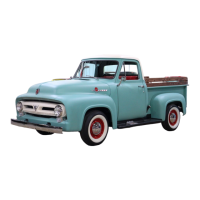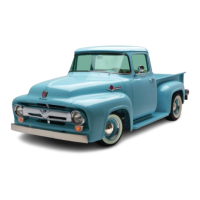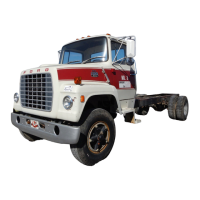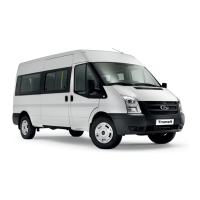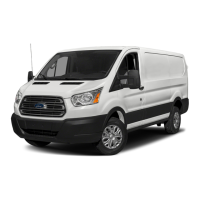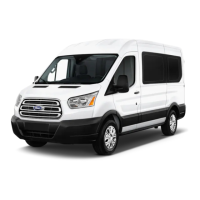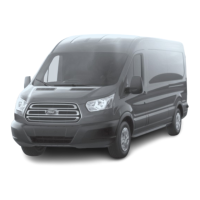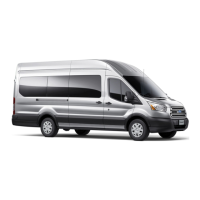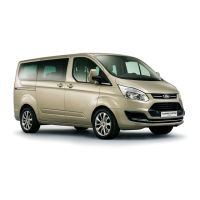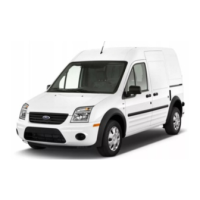11-01-2 General Wheel and Tire Service
11-01-2
F1857-A
FIG.
1 Handling Wheels and Tires
F1853-A
FIG.
2 Safe Air Removal
F1856-A
FIG.
3 Changing Tire on Drop Center
Rim
Always lubricate tire beads to assure
sealing of tire beads on rim.
A new Rotunda tire changer is
available. Details include a bead seater/
inflator using an automatically
adjustable inflation ring, which aids in
properly seating
the
bead for inflation. To
properly operate the new Rotunda tire
changer, follow the instructions
provided.
As with the drop-center rims, be
certain on split-rim assemblies that all air
is
out before unlocking a rim or
ring.
Use
special care when using tire irons. Grip
them firmly and keep them free of oil and
grease. They can slip and fly with
tremendous force (Fig. 4).
F1858-A
FIG.
4 Use of Tire Irons
A careful inspection should be made
of the tire and all necessary repairs
should be performed. A tire spreader is
very helpful (Fig. 5) but use care when
working around it. Keep the spreader
arms closed when the machine is idle.
FI860-A
Inspect the rim parts carefully for
rust, damage or distortion
(Fig.
6).
Never
use rims, locking rings or flanges which
are out of shape, rusted or cracked or
broken in any way. Never use a ring or
other rim parts of different manufacture
than the original rims or any different
size, or type.
F1854.A
FIG.
6 Visual Inspection
Tires and rims often require a buffing
operation before being mounted once the
regular repairs have been made.
Always wear Safety Goggles, or a
face shield when performing any buffing
operation.
Avoid hammering rings or rims with
steel hammers. Small bits of steel may be
broken off the hammer or
rim,
flying
into
the eyes (wear safety goggles) face or
body. Use rubber-covered, steel-headed
hammers wherever possible (Fig. 7).
Rubber mallets only should be used on
passenger car tires; although with
modern tire changing equipment no
pounding is necessary.
F1859-A
FIG.
5 Tire Spreader
FIG.
7 Seating of Rings

